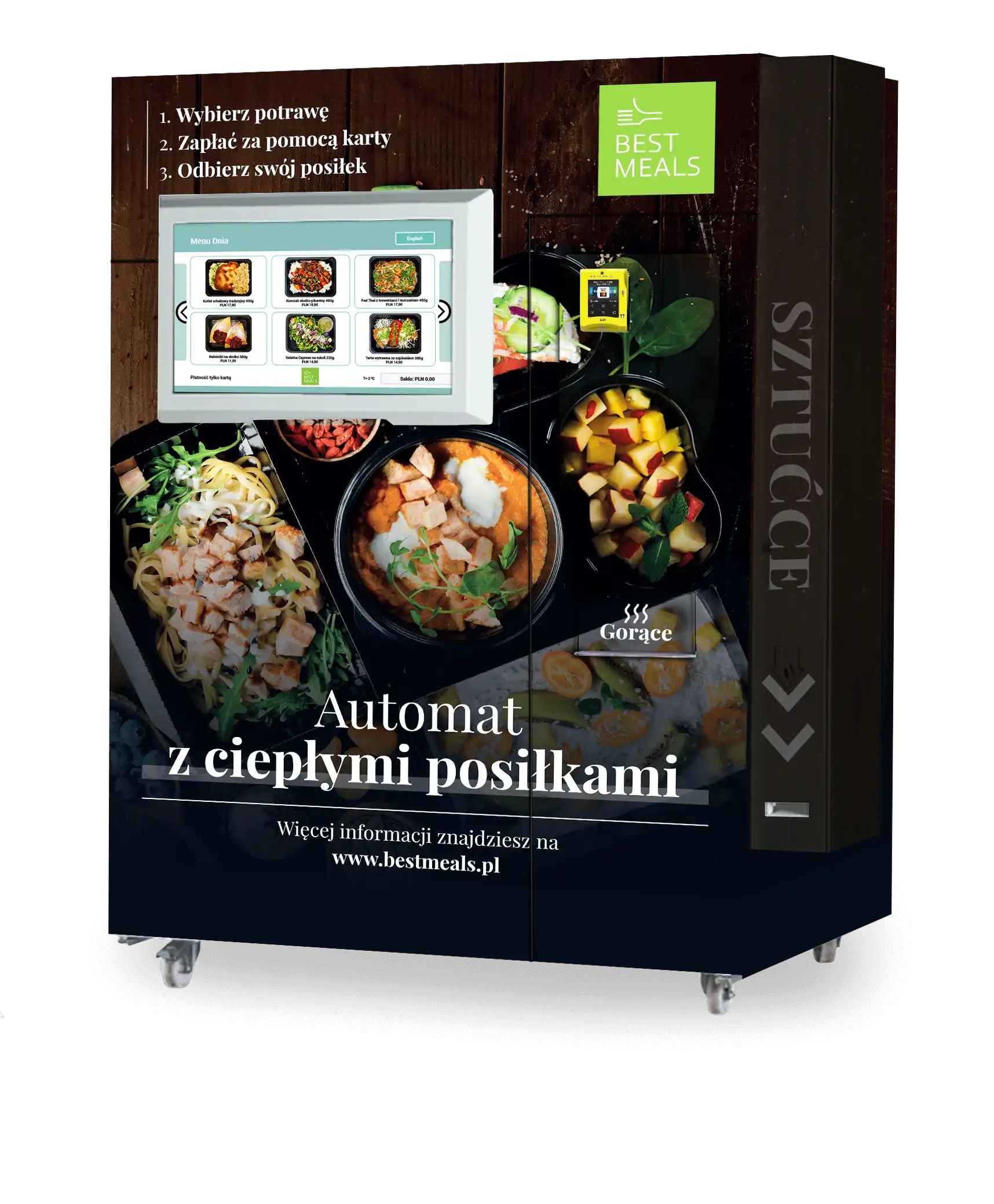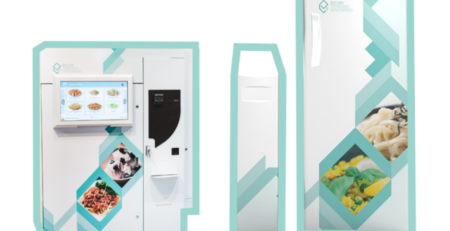How to Choose and Buy a Hot Food Vending Machine: The Complete Guide
In an era where convenience rules, hot food vending machines are revolutionizing the way people access meals on the go. Whether in offices, hospitals, train stations, or universities, these machines offer hot, ready-to-eat meals 24/7. For entrepreneurs, facility managers, and food service operators, investing in a hot food vending machine can open up new revenue streams and improve customer or employee satisfaction.
However, selecting the right machine is no small feat. The market is broad and varied, and each type of machine offers different features, technologies, and business models. Fortunately, Google Search and other online tools have made it easier than ever to research, compare, and purchase the perfect machine for your needs. In this guide, we’ll walk you through everything you need to know—from the initial research phase using Google, all the way to maintenance and marketing.
1. Define Your Goals and Target Market
Before diving into Google searches or contacting suppliers, clarify your objectives. This will influence every other step.
1.1 Determine Your Business Model
- Are you buying for a business? (e.g., office, school, hospital)
- Is this a commercial venture? Will you place the machine in high-traffic areas to sell meals to the public?
- Do you plan to own and operate the machine or lease it to third parties?
1.2 Know Your Audience
- Office workers, students, travelers, gym-goers, and night-shift employees all have different food preferences.
- Research dietary trends: vegan, vegetarian, gluten-free, or high-protein meals.
- Define price points and portion sizes that match your audience’s needs.
2. Begin Your Research with Google
2.1 Use Google to Explore the Market
Google is the ultimate starting point for understanding what’s available. Use keyword searches to:
- Find manufacturers and suppliers:
- “hot food vending machine supplier USA/UK/EU”
- “automated meal vending system manufacturer”
- Discover product types:
- “microwave vending machine for offices”
- “robotic food vending kiosk”
- Compare prices:
- “hot food vending machine cost comparison”
- *”cheapest smart vending machine 2025″
2.2 Explore Google Shopping and Images
Click on the Shopping tab to compare real-time prices and retailers. Use Images to see different models and configurations. This is especially helpful for visualizing machine size, interface design, and branding possibilities.
2.3 Read Google Reviews
Look up specific suppliers or machine models to read reviews from real customers. Search queries like:
- “XYZ Vending customer feedback”
- “ABC Smart Machine reviews Reddit”
2.4 Use Google Maps to Find Local Dealers
Search for vending suppliers near you by entering:
- “hot food vending distributor near me”
- “vending machine demo showroom [city]”
Google Maps will often display business ratings, contact details, and even photos of products.
3. Understand the Types of Hot Food Vending Machines
3.1 Microwave-Based Machines
These machines store pre-cooked meals in refrigerated compartments and use a microwave to heat them before dispensing.
- Pros: Cost-effective, fast, reliable
- Cons: Limited meal variety, uneven heating
3.2 Induction or Steam-Heating Machines
These use induction technology or steam to reheat meals more evenly and maintain food quality.
- Pros: Better taste and texture
- Cons: More expensive, may require more power
3.3 Robotic Cooking Vending Machines
These units cook meals on demand using robotic arms or internal cooking mechanisms.
- Pros: Customizable meals, premium experience
- Cons: High cost, complex maintenance
3.4 Hybrid Machines
Offer both hot meals and cold snacks/drinks. Ideal for high-traffic locations looking to serve all-day needs.
4. Evaluate Features and Specifications
Using your Google search results, create a comparison chart of different machine models. Pay attention to:
4.1 Meal Capacity
- How many different dishes can be stored and served?
- How many total meals before restocking is required?
4.2 Heating Time
- Average time per meal (ideally under 2 minutes)
- Can multiple meals be heated simultaneously?
4.3 User Interface
- Touchscreen? Multilingual options? Visual menu?
- Can it show allergens, calories, ingredients?
4.4 Payment Options
- Accepts coins, cards, contactless, QR codes, or mobile wallets?
4.5 Connectivity and Remote Management
- Real-time stock tracking?
- Sales reporting?
- Remote troubleshooting?
4.6 Cleaning and Hygiene
- Is the machine easy to sanitize?
- Does it meet local health regulations?
5. Legal, Technical, and Safety Requirements
Before making a purchase, make sure the machine and business model comply with all applicable laws.
5.1 Certifications
- CE, UL, or other relevant safety and hygiene certifications
5.2 Health Regulations
- Food handling, storage, and heating must meet local health codes
- Labeling for allergens and ingredients is often required
5.3 Installation Requirements
- Electrical supply and ventilation
- Space for servicing and restocking
Use Google to find local requirements:
- “food vending machine laws in [your region]”
- “CE certification vending machines”
6. Food Supply and Logistics
Choosing a vending machine also means setting up a reliable supply chain for meals.
6.1 Choose the Right Meals
- Ready-to-heat dishes with long shelf lives
- Vacuum-sealed, frozen, or refrigerated meals
- Meal variety: breakfast, lunch, dinner, and snacks
6.2 Find a Food Supplier
Use Google to find:
- “ready meal suppliers for vending machines”
- “OEM meal production for vending”
Look for HACCP-certified suppliers and test samples before committing.
6.3 Inventory Management
- How often will you restock?
- Who will handle deliveries and replenishment?
7. Cost and Financing Options
7.1 Initial Investment
- New machines: $5,000 to $40,000+
- Robotic systems may cost significantly more
- Leasing is often available
7.2 Operating Costs
- Energy
- Meal procurement
- Maintenance and service
- Payment processing fees
7.3 Profitability
Use Google Sheets or Excel to model potential ROI:
- Estimate meals per day x profit margin
- Subtract monthly costs (energy, food, labor)
8. Where to Buy
8.1 Google Search for Vendors
Start with Google to identify reputable sellers:
- “buy hot food vending machine [country]”
- “best hot food vending supplier Europe/USA”
8.2 Online Marketplaces
- Alibaba, Amazon Business, Made-in-China, eBay
8.3 Manufacturer Websites
Many top suppliers have direct websites with catalogs, videos, and contact forms. Use Google to find:
- “robotic vending machine manufacturer”
- *”smart meal kiosk direct from factory”
8.4 Local Distributors
Google Maps and Google Business Profiles can reveal nearby options. Search:
- “vending machine dealer near me”
- “vending equipment showroom [city]”
9. Maintenance and Support
9.1 Warranty and Service
- Choose vendors offering at least 1-year warranty
- Remote diagnostics and on-site repair options
9.2 Training and Documentation
- Is there onboarding for staff?
- Are training videos and manuals available?
9.3 Cleaning Schedule
- Set daily, weekly, and monthly cleaning routines
- Log cleaning and servicing in spreadsheets
Use Google Calendar for scheduling maintenance and Google Drive to store manuals and records.
10. Marketing and Launch Strategy
10.1 Promote Online
- Create a Google Business Profile for each location
- Use Google Ads to attract local foot traffic
- Post machine launch on social media
10.2 Offer Promotions
- First meal free or discounted
- Loyalty rewards via QR codes or SMS
10.3 Use Analytics
- Use built-in reporting features to track best-selling meals
- Adjust inventory and pricing accordingly
11. Future Commercial Growth Potential
The hot food vending industry is evolving rapidly, with increasing demand for convenient, high-quality meals. Below are two visual diagrams to help forecast and understand growth opportunities.
11.1 Global Market Forecast: Hot Food Vending Machines (2024–2030)
| Year | Market Size (USD Billion) |
|------|---------------------------|
| 2024 | 7.2 |
| 2025 | 8.4 |
| 2026 | 9.7 |
| 2027 | 11.1 |
| 2028 | 12.6 |
| 2029 | 14.2 |
| 2030 | 16.0 |Source: Market Research Future / Allied Market Research
11.2 Growth Opportunities by Location Type
| Location Type | Growth Potential (2025–2030) |
|---------------------|-------------------------------|
| Office Buildings | High |
| Hospitals | High |
| Airports & Stations | Very High |
| Universities | High |
| Gyms & Fitness Clubs | Medium |
| Residential Complexes| Medium |
| Retail Stores | Low |Note: Based on urban development and demand for quick meals
These trends indicate a strong long-term investment opportunity, particularly in transportation hubs and institutional settings.
Conclusion
Choosing and buying a hot food vending machine is a multi-step process that can be simplified with smart research. Google Search is your best ally throughout the journey—from discovering machines, comparing features, finding suppliers, and even promoting your vending operation. With the right tools and information, you can launch a successful vending business that offers convenience, innovation, and profitability.
Remember: your success isn’t just about the machine you choose, but how well you plan, promote, and adapt to your audience’s needs. Start with a search, and let data guide every decision.





